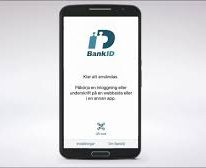In this post, I will delve on our round-table discussion of digital identification (eIDs) and gatekeeping. This topic is interesting because we can see issues of inclusivity when we look at all forms of technology, since technology recreates inequalities in society (O’Donnell & Sweetman, 2018). However, while some of these issues stem from lack of connectivity, others cannot be connected to a classic view of the digital divide. Instead, they are connected to a social divide that arises from socio-political apparatuses (Foucault, 1984). Still, first we must understand why this is an issue. As such, let us talk about human rights.
Why Human Rights?
I am approaching human rights because of the level of involvement certain countries, often from the Global North, have in development and intervention programs. These are countries that seemingly strive for democratic inclusion and are often held as examples of inclusion in terms of gender (Charlton, 2021) and ethnicity (World Population Review, 2021). While some of these countries have encountered widespread systemic issues leading to public outcry (Jackson, 2019; Wilkins, Livingstone, & Levine, 2019), others, such as the Nordic countries, continue to be perceived as progressive. As such, it is important for us to examine how their equality is digitally expressed. This is because, as O’Donnell and Sweetman underlined in their article on development and ICTs’, “technology mirrors the societies that create it” (2018, p. 217). Therefore, access to ICTs is interlinked with the intersectional spectrums of inclusion and exclusion.
However, covering all Nordic countries would require a level of specificity that would only be interesting for a small section of readers – and we try to be inclusive in this blog. Thus, I have chosen to focus on Sweden. Sweden stands out for a handful of reasons. The first of them being that, as an immigrant in Sweden, I have intimate knowledge of the realities of digital integration. Another reason is that Sweden incorporated eIDs over a decade ago, while other Nordic countries only had basic integration until recently (nets, 2021). Still, let us begin by looking at human rights to provide a framework for equality.

Universal Declaration of Human Rights
Since 1948, the Universal Declaration of Human Rights (UDHR) has been seen as a global standard of achievement (United Nations, 1948). It has paved the way for the creation of several human right treaties and is generally regarded as the basis for developmental programs. From this declaration, we can ascertain that everyone should have equal rights that include the right to:
- recognition as a person (Article 6).
- equality without discrimination (Article 7).
- freedom of movement (Article 13).
- freedom of opinion and expression (Article 19).
- public service and political engagement (Article 21).
- social security (Article 22).
- an adequate standard of living which includes clothing, housing, and the necessary social services. (Article 25).
- participate in the cultural and social life of a community (Article 27).
In short, the UDHR strives to create a standard of equality. However, nation-states do not always enact the standards presented in the declaration. In fact, this is one of the reasons set forth for intervention and development programs implemented by the Global North (Milan & Treré, 2019; Sabaratnam, 2017). Nevertheless, if we observe the articles I selected, we can see a link between Human Rights and ICTs. Further, we can surmise that the incorporation of eIDs can hamper the creation of equality.
In the case of Sweden, this can be particularly pronounced given the financialization of eID technologies (Husz, 2018). That is to say that Swedish practices of digital identification and its interlinkage with private financial institutions poses a set of problems for some sectors of the population – particularly migrants. To understand the depth of the problem, it is useful to look at Sweden’s most used eID program: BankID.
BankID
As the name suggests, BankID is a digital identification produced by banks. Thus, in Sweden, to have a BankID means also having a bank account – intrinsically linking it to financialization. This leads to financial institutions in Sweden having a marked size and influence in digital Swedish practices. This is also echoed in BankID’s website:
“With BankID, the Swedes sign agreements, loan documents and their tax return. They identify themselves in order to be able to pay securely on the internet, log in with försäkringskassan [social insurance agency]or collect packages from the postal agent. With fast and secure identification, society can continue to develop without unnecessary risks to businesses or to people’s privacy” (BankID, 2021a).
It is interesting to note that BankID is not Sweden’s only eID service. However, it is the oldest and most used across all platforms (BankID, 2021b). Swedish academic Orsi Husz states that this stems from a historic financialization of identity in Sweden (2018). Specifically, payroll systems in Sweden began depositing wages in checking accounts in the late 1950s. This led to the growth of large-scale retail banking, and to the creation of certified ID cards that adhered to Swedish Standards (SiS).
The creation of ID cards stemmed from the need to have a form of secure identification to access bank accounts – a system which was already ran by the Swedish postal service but was not very used by Swedes. Thus, while there was some resistance, by the end of the 70s a nationwide campaign had successfully created the connection between identity cards and money. Further, although in the early 2000s the dissemination of ID cards fell back to the state, the sociocultural connection between identification and finances in Sweden remained. The creation of BankID in 2003 as the first eID sprang from this financial connection.
This legitimacy is further substantiated by the late creation of E-legitimationsnämnden (E-identification committee), now DIGG (Digitization Authority), in 2011 (Statens Offentliga Utredningar, 2010) – the year Mobile BankID was released to the public. Indeed, for eight years the Swedish state did not see the need to oversee eIDs. This is because the connection between financial institutions and identifications allowed for an implicit trust in BankID. However, this trust in banks is not global, as a Google search can quickly demonstrate. As such, we arrive to our first problems for many people migrating to Sweden: the need to trust banks with their identity. Although anyone can argue that people can also mistrust their government (OECD, 2021), most of the population is used to identification documents being handled by the state. Yet, this is only a part of the problems for people migrating to Sweden when it comes to eIDs.
Migration and Digitalization
According to the Swedish Institute, moving to Sweden can be simplified in 10 steps that begin with getting a residence permit (2021). In fact, getting an ID card is only step number four. There is no mention of getting a Swedish bank account, or an eID. These steps can indeed work in certain instances, such as if you are moving to Sweden for studies.
However, if you wish to integrate to the Swedish society or are migrating to Sweden for other reasons, you will encounter issues. For one, a person moving for work for a long or undetermined period will need to have a Swedish bank account for payroll deposits. This step requires a Swedish ID card if you want a bank account with full services. Otherwise, you must provide a valid passport from your country, together with a longer list of documents that include proof of address (B2B Pay, 2021). This second option will give the account holder access to a basic account and is not available in all banks.
This means that not only will the account holder need to find a bank that accepts a foreign passport, but they will also need to go to a bank to perform transactions since they will not be issued a card or have access to digital banking.
This creates two large problems. One, a migrant to Sweden is solely treated as an individual by financial institutions after they have a Swedish ID. As I have already demonstrated in this post, finances and identity are interlinked in Sweden. Thus, a person without a Swedish ID is not a fully recognised individual in the sociopolitical spectrum of Sweden. The second problem stems from the lack of access to BankID which is the only eID in Sweden that gives you access to all private and public providers. Therefore, the lack of BankID cripples a person’s ability to establishing themselves in Sweden.
This lack of access has been evident during the pandemic when people without a personnummer (personal number) or BankID had issues securing a vaccine appointment (The Local, 2021b). Further, it also affected Sweden’s older population given that only 38.6% of people over 80 have BankID (BankID, 2021b). Because some regions of Sweden initially only had the possibility of booking time for a vaccine online, “it was not possible for 61.4 per cent of people over the age of 81 to do this” (Swedish eHealth Agency, 2021, p. 17). While this was later rectified by the opening of phone lines to book an appointment, it still created issues within the healthcare system such as the delay of vaccine rollouts for younger age groups.
Yet, this digital gatekeeping also exists outside of the healthcare system. Whether a person needs to report their taxes, pay rent, or rent a first-hand apartment – all these systems, and more, require BankID. Therefore, to live in Sweden without BankID hampers a person’s everyday life and leaves them vulnerable. For example, without having access to a first-hand contract rental, people must rely on second-hand contracts. These second-hand contracts mean that people are at the mercy of landlords who might overcharge them or kick them out of their rental without notice. Although there are laws in Sweden that protect second-hand renters, this requires that the person know of those laws, and know how to navigate the Swedish system. It also endangers their chances of getting another second-hand contract.
The Waiting Game
Nevertheless, it is true that if you have a personnummer, securing a bank account with BankID is relatively easy – if you also have an employment contract (B2B Pay, 2021). This means that freelance contractors and other self-employed people have additional issues securing a BankID. Moreover, this is without considering the length of time it takes to get a personnummer, a Swedish ID, and a bank account.
Nowadays, applications to get a Swedish personnummer take 18 weeks (Human Entrance, 2021). Yet, looking at online forums such as reddit, I found several cases of people waiting up to half a year or more. To this time, we must add the time it takes to get an ID card (around 2 weeks), and the time it takes to get a bank account (1-3 months).
This is, of course, without considering the time it takes to get an appointment since you must make an appointment to apply for an ID card. Additionally, most banks have began requesting prospective customers to make an appointment. Waiting times for either vary greatly between regions and organisations, but a quick look-up in several reddit forums allowed me to gage that it usually takes around a month to secure each appointment. To this, we must add the waiting times of the Swedish migration agency if you come from outside the EU – up to 37 months (The Local, 2021a). As such, it is not unheard of for a person to have to wait a year or more if they want to have access to BankID and the integration it provides in Sweden.

Connectivity
As we can see, in Sweden, the lack of BankID impedes on the human rights of people migrating to the country. This is because, while there are other available options for eIDs, this require the pre-existence of a national eID that is accepted in Sweden, or the use of private services such as Freja eID Plus.
This poses its own set of problems because eIDs are not widely available, and, at least for now, Sweden only accepts eIDs from a handful of EU countries. Freja, on the other hand, requires a physical meeting, and only accepts documents that contain numbers as a form of identification. Thus, if your ID contains letters – you are out of luck. Additionally, you require a personnummer to have access to Freja, and it is currently only recognised within state-ran organisations. This means that you still need to wait for your personnummer, and you will not have access to the full range of digital services used in Sweden.
The question remains, however, how this digital exclusivity can equal to human rights violations. I argue that this exclusivity is imbued with a societal lack of recognition of foreign individuals, and it impedes their access to an adequate standard of living. Similarly, this digital gatekeeping makes it much harder for a person to move, express themselves, or engage in the political, cultural, and social life in the community. This is not only because it goes directly against some UDHR articles, but also because they create a societal hierarchy that embeds inequality in its daily living.
O’Donnell and Sweetman argue that technology is a tool that enables human activity, thus replicating societal exclusivity (2018). This is clear with BankID, but while writing for this blog, I have come to reflect on my own digital practices.
Earlier in this post, I mentioned that we try to be inclusive in this blog. Yet, issues arise when engaging with our tools, digital or otherwise. For one, we write in English. In fact, English is the most common language on the Internet, with Chinese falling not far behind (Johnson, 2021). Yet, that leaves us with 7,137 (Ethnologue, 2021) languages trailing behind or not existing in this digital medium. Furthermore, not everyone has access to the Internet, so, even if they spoke English, they will not have access to this blog. Indeed, there are a myriad of exclusions when I write here, and they will continue to exist regardless of how inclusive I try to be.
Still, that is not a reason to stop trying to be inclusive or give up writing. What we must do, or what I try to do, is to reflectively engage with my own actions:
- Why am I doing this?
- Who am I doing this for?
- Do my actions have the possibility to positively affect someone?
These are all questions we must keep in mind while exercising our digital rights and privileges. Sometimes digitality is not enough – even if it might be a good starting point. Thus, I urge my readers to be critical of themselves and accept that while exclusion is embedded in our practices, we can also work against it. Whether it is by engaging with digital failure (Bridges, 2021) or questioning the motives of state-of-the-art technology (Jutel, 2021), it is up to you to engage with Otherness. For my part, I will continue engaging with critical discourses and striving to point towards the embedded lacks in our society in the hope to open spaces of inclusivity for those without a voice.
Works Cited
B2B Pay. (2021, October 06). How to open a bank account in Sweden. November 02, 2021, B2B Pay: https://www.b2bpay.co/how-open-bank-account-sweden
BankID. (2021a, October 28). BankID in Numbers. October 29, 2021, BankID: https://www.bankid.com/en/om-oss/statistik
BankID. (2021b, October 31). Safe, fast and smooth. November 01, 2021, BankID: https://www.bankid.com/en
Bridges, L. E. (2021). Digital failure: Unbecoming the “good” data subject through entropic, fugitive, and queer data. Big Data & Society, January–June, 1-17. doi:10.1177/2053951720977882
BuyTrust. (2021, October 28). Vad är Trust? November 02, 2021, BuyTrust: https://buytrust.se/trust.html
Charlton, E. (2021, March 31). These are the top 10 countries for women’s rights and opportunities. November 01, 2021, World Economic Forum: https://www.weforum.org/agenda/2021/03/best-countries-women-s-rights-gender-gap/
Ethnologue. (2021, November 01). How many languages are there in the world? November 03, 2021, Ethnologue: Languages of the World: https://www.ethnologue.com/guides/how-many-languages
Foucault, M. (1984). The Foucault Reader. (P. Rabinow, Ed.) New York: Pantheon Books.
Human Entrance. (2021, October 25). Extensive Delays to Receive a Swedish Personal Number. November 01, 2021, Human Entrance: https://www.humanentrance.com/newses/extensive-delays-to-receive-a-swedish-personal-number/
Husz, O. (2018). Bank Identity: Banks, ID Cards, and the Emergence of a Financial Identification Society in Sweden. Business History Conference (pp. 391-430). Cambridge: Cambridge University Press.
Jackson, J. (2019, August 15). ‘Black Communities Are Already Living in a Tech Dystopia’. October 31, 2021, Fairness & Accuracy in Reporting: https://fair.org/home/black-communities-are-already-living-in-a-tech-dystopia/
Johnson, J. (2021, January 27). Most common languages used on the internet as of January 2020, by share of internet users. November 01, 2021, Statista: https://www.statista.com/statistics/262946/share-of-the-most-common-languages-on-the-internet/
Jutel, O. (2021). Blockchain imperialism in the Pacific. Big Data & Society, January-June, 1-14. doi:10.1177/2053951720985249
Milan, S., & Treré, E. (2019). Big Data from the South(s): Beyond Data Universalism. Television & New Media, 20(4), 319–335.
nets. (2021, October 17). eIDs. October 31, 2021, nets: https://www.nets.eu/developer/E-Signing/eIDs
O’Donnell, A., & Sweetman, C. (2018). Introduction: Gender, development and ICTs. Gender & Development, 217-229.
OECD. (2021, October 10). Trust in Government. October 31, 2021, Organisation for Economic Co-operation and Development: https://www.oecd.org/gov/trust-in-government.htm
Sabaratnam, M. (2017). Decolonising Intervention: International Statebuilding in Mozambique. London: Rowman & Littlefield International Ltd.
Statens Offentliga Utredningar. (2010). E-legitimationsnämnden och Svensk e-legitimation. October 31, 2021, Regeringskansliet: https://www.regeringen.se/48ef31/contentassets/e031f49a8c7b48969b8ea4b45a2016d2/e-legitimationsnamnden-och-svensk-e-legitimation-del-1-av-2-kapitel-1-11-och-bilaga-1-5-sou-2010104
Swedish eHealth Agency. (2021, April). Follow-Up Vision for eHealth 20255 – Report on the Year 2020. November 01, 2021, E-hälsomyndigheten: https://www.ehalsomyndigheten.se/globalassets/dokument/rapporter/follow-up-vision-for-ehealth-2025.pdf
Swedish Institute. (2021, June 01). Here are 10 things to take care of when you move to Sweden – chronologically. November 02, 2021, Sweden: https://sweden.se/work-business/moving-to-sweden/moving-to-sweden-in-10-steps
The Local. (2021a, January 22). Migration Agency criticised over record long waiting times. November 01, 2021, The Local se: https://www.thelocal.se/20210122/migration-agency-criticised-over-record-long-waiting-times/
The Local. (2021b, May 16). Sweden’s foreign residents report confusion over booking Covid-19 vaccine without a personnummer. October 30, 2021, The Local se: https://www.thelocal.se/20210512/covid-19-vaccine-personnummer-bankid/
United Nations. (1948). Universal Declaration of Human Rights. October 31, 2021, United Nations: https://www.un.org/en/about-us/universal-declaration-of-human-rights
Wilkins, D., Livingstone, A., & Levine, M. (2019). Whose tweets? The rhetorical functions of social media use in developing the Black Lives Matter movement. British Journal of Social Psychology, 58(4), 786-805.
World Population Review. (2021, October 24). Least Racist Countries 2021. October 30, 2021, World Population Review: https://worldpopulationreview.com/country-rankings/least-racist-countries


